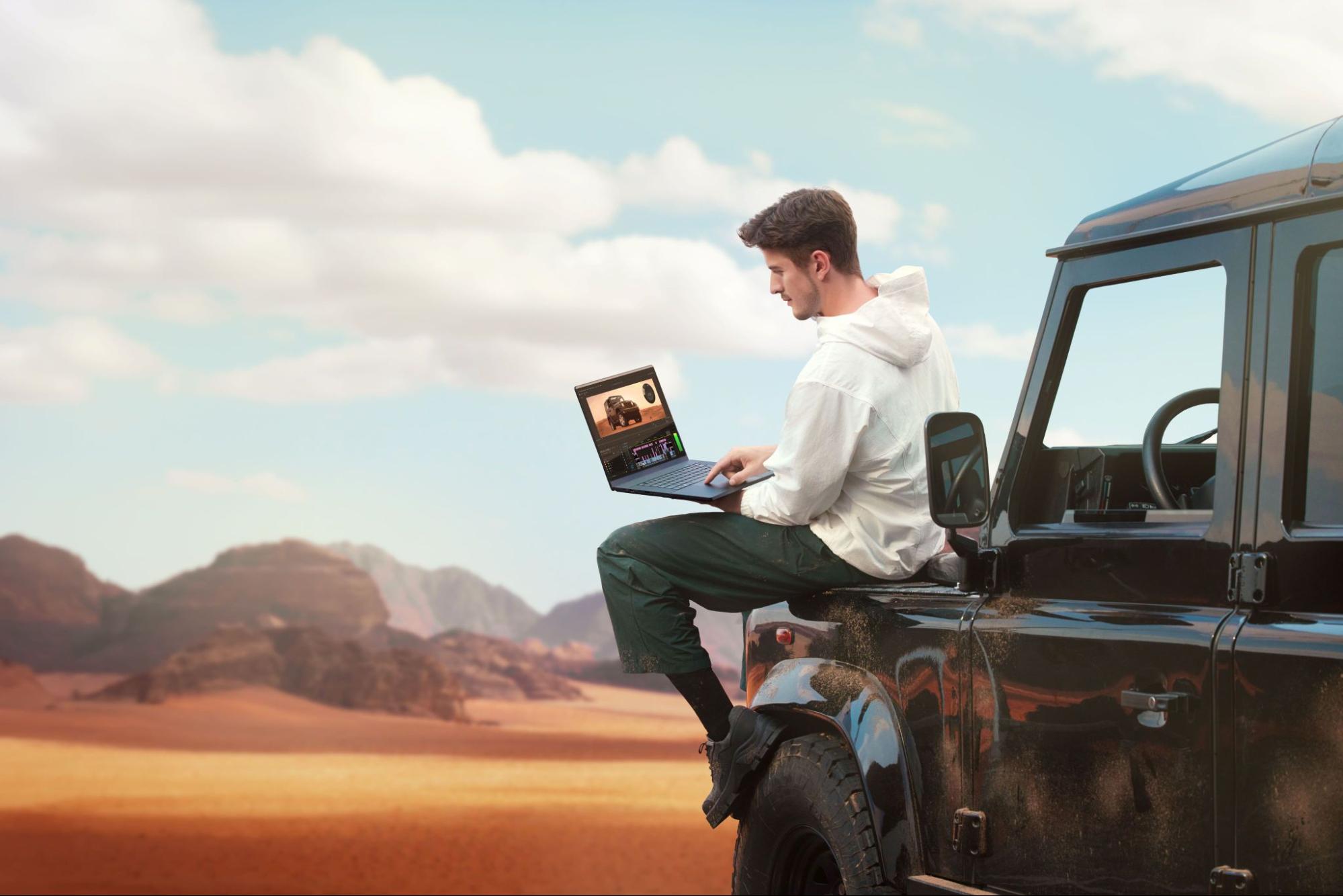
As a seasoned tech enthusiast with a knack for creative pursuits, I can’t help but be thrilled by the surge of AI-powered devices that are making their way into our daily lives. With over 100 million RTX AI PCs in the market today, it feels like we’re living in the future!
There’s been a significant increase in AI-driven applications capable of tasks such as image creation, video editing, game improvement, and data summarization. While numerous AI tools are accessible via the cloud, there are more than 600 apps and games that utilize AI locally on RTX GPUs. By using AI software on your device, you can enjoy heightened privacy since no data is sent elsewhere, and you can also leverage the power of dedicated hardware designed specifically for advanced machine learning and AI inference. However, not just any computer will suffice; these applications thrive on specialized hardware capable of swiftly handling the complex calculations they require. This is where AI-optimized computers come into play.
While every PC is going to offer a CPU, and some will even offer incredibly powerful ones, the CPU is a generalist that’s not particularly suited to the demands of AI. AI PCs have an NPU for lightweight AI. Adding a GPU is what accelerates a wide range of even demanding AI tasks. But what are those two components all about?
To perform AI tasks efficiently, it’s essential to understand the concept of TOPS, or Trillions of Operations Per Second. This measurement represents the speed at which numbers can be processed in AI tasks. Basically, more operations per second means better performance. For instance, NPUs (Neural Processing Units) typically reach around 50 TOPS, making them suitable for lightweight AI-assisted tasks such as image processing during video calls or quickly summarizing text documents.
NVIDIA’s GeForce RTX laptop graphics processors begin at 194 TeraOps (Operations Per Second) and reach a maximum of 686 TeraOps with the GeForce RTX 4090 models. These GPUs are equipped with specialized AI processors called Tensor Cores, which execute mathematical operations exceptionally fast and accurately. So, what can you accomplish with this kind of speed?
Content makers have the ability to utilize swift image and video production tools, which are powered by Stable Diffusion and optimized using NVIDIA TensorRT technology for faster processing speeds.
Players might find advantage with DLSS 3.5, an exclusive feature for RTX graphics cards, as it boosts frame rates and enhances graphic quality in recent video games such as Star Wars Outlaws.
To boost productivity, the AI-powered chatbot known as NVIDIA’s ChatRTX can be utilized. This chatbot has access to your personal content such as documents, notes, images, and other materials, allowing it to swiftly provide contextually relevant information.

Currently, there are more than 200 top-tier RTX AI PCs on the market, all equipped with GPUs powerful enough to handle AI tasks. The ASUS ProArt P16 offers a spacious and visually appealing platform for both daily computing needs and AI applications. Its expansive, 4K OLED touchscreen presents an ideal canvas for AI projects and can greatly benefit from real-time image enhancements such as RTX Video HDR, which is made possible by the NVIDIA GeForce RTX 40 Series graphics integrated within it.
The ProArt P16 system, along with any hardware that features an NVIDIA GeForce RTX GPU, benefits from the support of NVIDIA Studio. This backing offers increased speed in creative applications, access to unique AI-enhanced tools, and NVIDIA Studio Drivers for enhanced performance, reliability, and speedier operation.
The MSI Stealth 16 AI combines power and mobility in a gaming laptop, offering the option to utilize its integrated NPU for energy savings or capitalize on its GeForce RTX GPU for enhanced performance. Remarkably, all these features are contained within a slim chassis, barely an inch thick. This laptop serves as an excellent testbed for both AI applications geared towards productivity and the numerous AI-driven tools provided by NVIDIA for game enhancement and beyond.

The ASUS ProArt PX13 is another impressive hardware device, seamlessly blending portability, adaptability, and artificial intelligence capabilities. This 2-in-1 gadget functions as both a laptop and tablet, yet manages to conceal robust hardware for everyday computing, gaming, and AI tasks within its compact size. Equipped with an onboard Neural Processing Unit (NPU) for light duties and the might of a GeForce RTX 4070 to boost AI workloads significantly, it’s equipped for AI in a way that few other tablets are. A high-resolution touchscreen OLED display with stylus compatibility provides an effective canvas for creative tasks, which can be further enhanced through AI assistance.
As more than 100 million RTX AI-powered computers are now widely available, their applications are expanding rapidly. To assist you in staying informed about the latest capabilities and uses for your AI computer, NVIDIA has launched the AI Decoded series. This resource offers insights into new features, tools, and practical advice on leveraging AI to suit your needs.
Read More
- Gold Rate Forecast
- SteelSeries reveals new Arctis Nova 3 Wireless headset series for Xbox, PlayStation, Nintendo Switch, and PC
- PI PREDICTION. PI cryptocurrency
- Eddie Murphy Reveals the Role That Defines His Hollywood Career
- Rick and Morty Season 8: Release Date SHOCK!
- Discover the New Psion Subclasses in D&D’s Latest Unearthed Arcana!
- Masters Toronto 2025: Everything You Need to Know
- We Loved Both of These Classic Sci-Fi Films (But They’re Pretty Much the Same Movie)
- Discover Ryan Gosling & Emma Stone’s Hidden Movie Trilogy You Never Knew About!
- Linkin Park Albums in Order: Full Tracklists and Secrets Revealed
2024-09-10 17:09